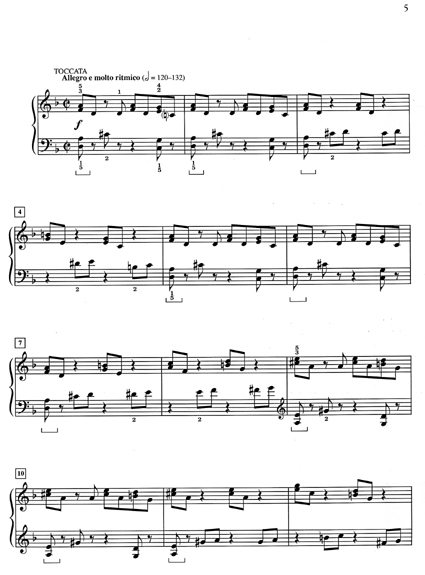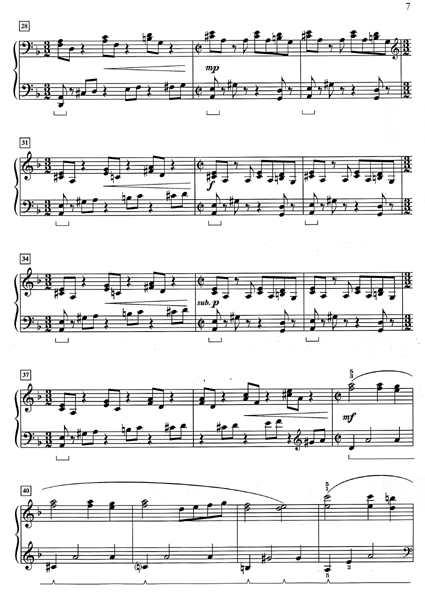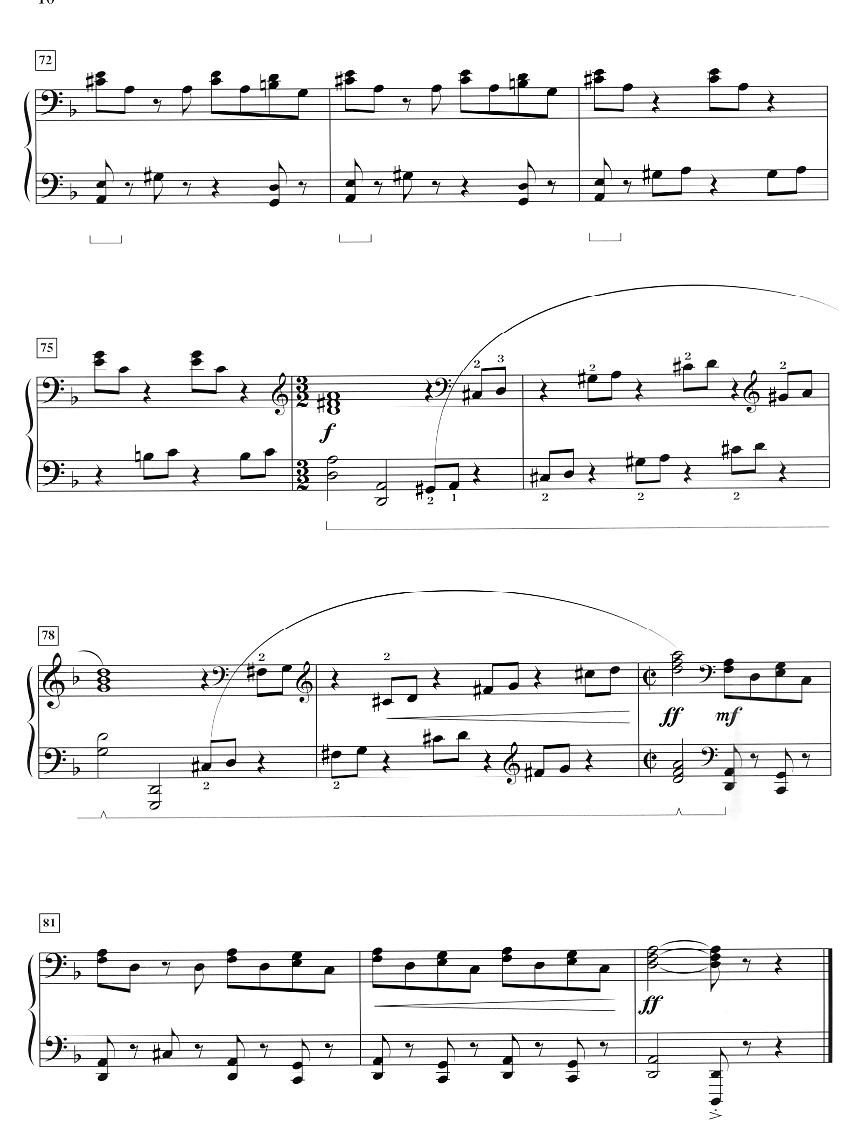Prelude and Toccata--Intermediate Solo

This is one of the newest additions to my piano library, (released Spring, 2005) and was written for the Linda Kennedy studio in Maumelle, AR-- a suburb of Little Rock. Linda invited me to be her "adopted composer" last year, and over the course of the year I got to know this remarkable teacher and her many fine students through monthly correspondence via email. Each month, the students would think of questions they wanted to ask me, and Linda would compile the list into one email and send it on to me. I responded to all of their wonderful questions, and grew to look forward to additional questions each month as the year progressed! Several of her students are budding young composers and it was great fun to share my thoughts with them as well as entertain their thoughtful and diverse questions. When I decided to write the "Prelude and Toccata" I knew that I wanted to write a work that would be accessible to many students at this level and I also wanted to compose something that would be a sure "winner" for recitals and contests. The response to this work over the summer during my many workshops around the country has been most gratifying, so I thought it would be appropriate to include it in the debut of my webpage.
When I first set down to compose this piece, I experienced what so many composers experience from time to time-- writers block!! I experimented and experimented with many different motives, and sat at the piano for what seemed like hours trying to formulate through improvisation a theme that I wanted to use for the Prelude. When it became apparent to me that nothing was "springing forth", I decided to begin with the Toccata movement, and a motive happily appeared to me in D minor and consisted of broken triads on d, C, and e. This opening melodic motive on A-A-G-A ended up being the unifying motive for not only the entire Toccata, but also gave me the magic ingredients for the Prelude which had been eluding me for so long!

(Click score to enlarge) The first four notes in ms. 8 include this 4-note motive in the key of A major, which then modulates to the key of b minor in 6ths in mss.10-11. Finally, in ms. 12 the motive appears in f# minor with the notes A-A-G#-A. The very beginning of this Prelude also contains the first 3 notes of the motive, but they're quite "hidden" in the broken chord texture of the arpeggiated patterns. When the LH crosses over to the high E in ms. 1, you'll find this note repeated in ms. 2, and in ms. 3, the LH crosses over to a D. The pattern then repeats and subsequently flows into the beautiful A major theme in ms. 8. Students need to listen carefully to the gentle and even 8th note patterns of this Prelude. The tempo is marked "andante con moto" so I would like to hear a nice, flowing pattern that suggests gracefulness and "liquid movement". This movement is very expressive, tender, and thoughtful-- if played with elegance and simplicity, it will form a perfect introduction to the very contrasting and exciting Toccata which immediately follows!

This movement is so much fun to play-- even though it moves very rapidly, the pattern feels very good in the hand, and almost "plays itself" after awhile. I might add that the Toccata also works beautifully for a small hand. There are only 6 octaves in the entire piece (all LH) and in each case, the upper note could be easily eliminated and the effect will not be compromised. I have marked this movement "allegro e molto ritmico", so it needs to have an extremely rhythmical and "driving" energy throughout. Give a little extra "pulse" to the strong beat of each measure. Students should practice blocking out the RH alone with the exact fingering indicated in the score-- once this is secure in the hand, the broken triad patterns will feel easy! The C#'s of the LH in ms. 1-2 allow for more relaxation in the RH and also make it easier to play faster with less effort. Please follow the pedal markings as the piece will sound crisper, cleaner, and much more exciting if the performance is not marred by excessive pedal. As always, follow the dynamic indications as well, especially in ms. 22 when the opening theme recurs an octave lower.

This next section has lots of sudden dynamic changes which add to the tension and excitement. I usually give a short "breath" just before the "subito piano" in ms. 35 to help create a more effective and sudden contrast! In ms. 39, I take the opening motive and create a much more lyrical mood, which gives the student an opportunity to relax and "recuperate" (if you will) from all the driving energy of the past two and a half pages. Please voice out the tops of the harmonic intervals of the RH in ms. 39-51.

The ending of this piece is so exciting, and it's important to maintain the steadiness of tempo in order to not lose control of that strong inner pulse! In mss. 76-79, practice the alternating pairs of eighth notes in block patterns to build security and confidence. Also, point out to your student that every single block begins with a black key-- this helps so much in building speed and accuracy. After arriving at a "ff" in ms. 80, pull back to a "mf" in order to create a resounding and effective final crescendo to the end. With careful, slow practice balanced with appropriate fast practicing, this piece will electrify audiences and serve as a great pupil motivator. Many thanks once again to Linda Kennedy for giving me the inspiration to write this "Prelude and Toccata" and good luck to all of you who choose to play it!





